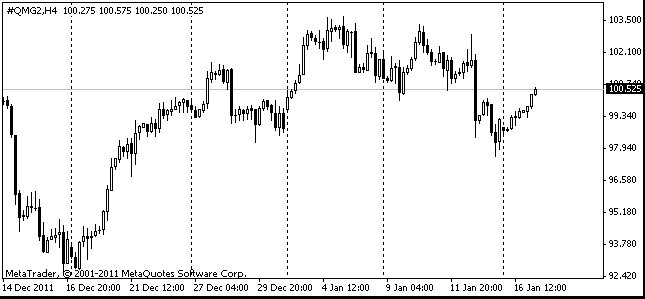EUR/usd
Exactly at the moment when commentators lost hope and stopped looking for the causes to buy assets the markets went up. As a rule, news feeds tend to account for the past trends and movements, which don't always have further development. Thus, yesterday morning the business press abounded in commentaries concerning the drastic state of affairs in different corners of the Earth, but from the very beginning of the European session the markets didn't feel any difficulty in finding buyers for the troubled securities. The positive impulse has played its role in the movement of the euro/dollar. The single currency again has broken up the 1.3140 level and moved to the highs of this week's trading range. Compared with the levels at which the pair started the month (above 1.33), the current levels look rather low and are nothing more than the minimal bounce off the bottom at 1.3020. ECB's men have come to the pair's rescue as well. They stated that the bond purchase programme can be revived to curb the yield growth of Spanish government stocks. A bit earlier alarm was brought by the caution of markets against the periphery debtors. It adversely affected Italy. Faced with the yield growth, the latter managed to sell its debts, albeit with a skid. Hardly any of the European officials wants to see the nightmare of the previous months again. Probably, they will be able to breathe with relief for a few coming days, but hardly longer. The markets have significantly declined since last week, having brought to naught the gains of one of the most powerful quarter of growth in the stock markets. It's curious that despite all this the single currency and other risk-sensitives should fail to generate the usual demand and to show a conspicuous growth. It looks as though the nature of the risky asset purchases had changed a bit since the beginning of the year. The priority has shifted from the developing exchanges to the developed ones. It's is especially clearly seen in the USA. There's more and more proof to the hypothesis that the American companies, which earlier staked on investing abroad, prefer to invest into the domestic innovations and production at the first stages of the economic cycle.

GBP/USD
No vital statistics were seen from Britain in the first half of this week, so the cable was mainly driven by the outer forces. Today the situation has somewhat changed after the release of data on the external trade. Suddenly luck has left Britain. The external trade deficit grew up to £8.8 bln in February against the expected decrease down to 7.7 bln and the preceding figure of about 7.9 bln. As for yesterday's news, the only event that can be considered here is the BRC's evaluation of retail sales, which have shown a bit stronger growth of 1.3% y/y against the expected zero balance. It's a trifling, but pleasant thing. Yesterday the sterling felt a bit better than the euro, though on the whole it keeps fluctuating within the narrow range in EUR/GBP: 0.8230-0.8260. Given that the positive sentiment in the markets persists, today the cable may fight for 1.60 against the current quote of 1.5930.

AUD/USD
Today the aussie has tried to fight off its place in the sun. The released labour statistics have proved to be quite strong in several directions. Thus, though unemployment has remained at the same level of 5.2%, the number of the employed has grown by 44K. However, almost 2/3 of this growth has been ensured by the part time employment sector. But as seen from the previous experience, if the situation doesn't worsen all of a sudden, the part time employment will be vigorously ousted by the full time one. Another reassuring fact is that the participation rate has risen from 65,2% straight up to 65,4%. Need a comparison? In the USA this indicator peaked at the junction of 2006 and 2007 at 66,4%, and according to the March data it makes 63,9%. In Australia the peak fell on November 2010 and totaled 66,0%. You see, the decline is not very significant. In this regard Australians may boast an incredible stability of the labour market. By the way, yesterday we mentioned about the descending corridor, the upper boundary of which passes through 1.035. Now the pair is at 1.039, which means that either the corridor will be corrected or the trend will reverse.

oil
Among other interesting developments in the market we should mention the oil quotes. After the blind sideways trend in March WTI started a decline, having fallen down to $101 per barrel from the peak of 110 at the beginning of March. It's been caused both by a certain progress in the negotiations with Iran (rather ephemeral though, when it is negotiated to continue the negotiations) and by the intention of the key consumer countries to unseal the strategic reserves. In the pre-election year neither Neither Obama nor Sarkozy wants to risk. It's quite probable that soon the short-term correction on the market bounce will be followed by the further decline to $90-95 bbl.
